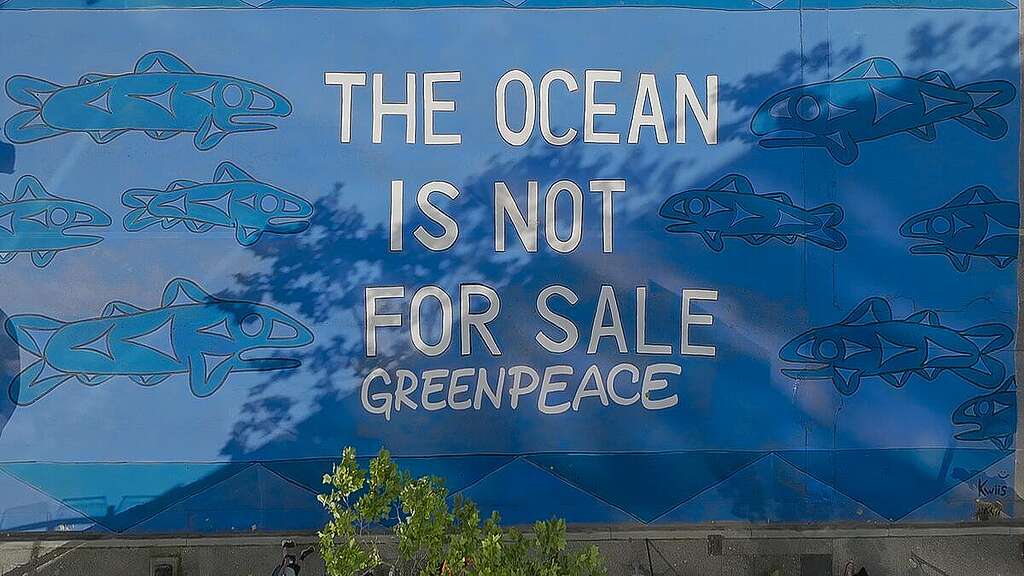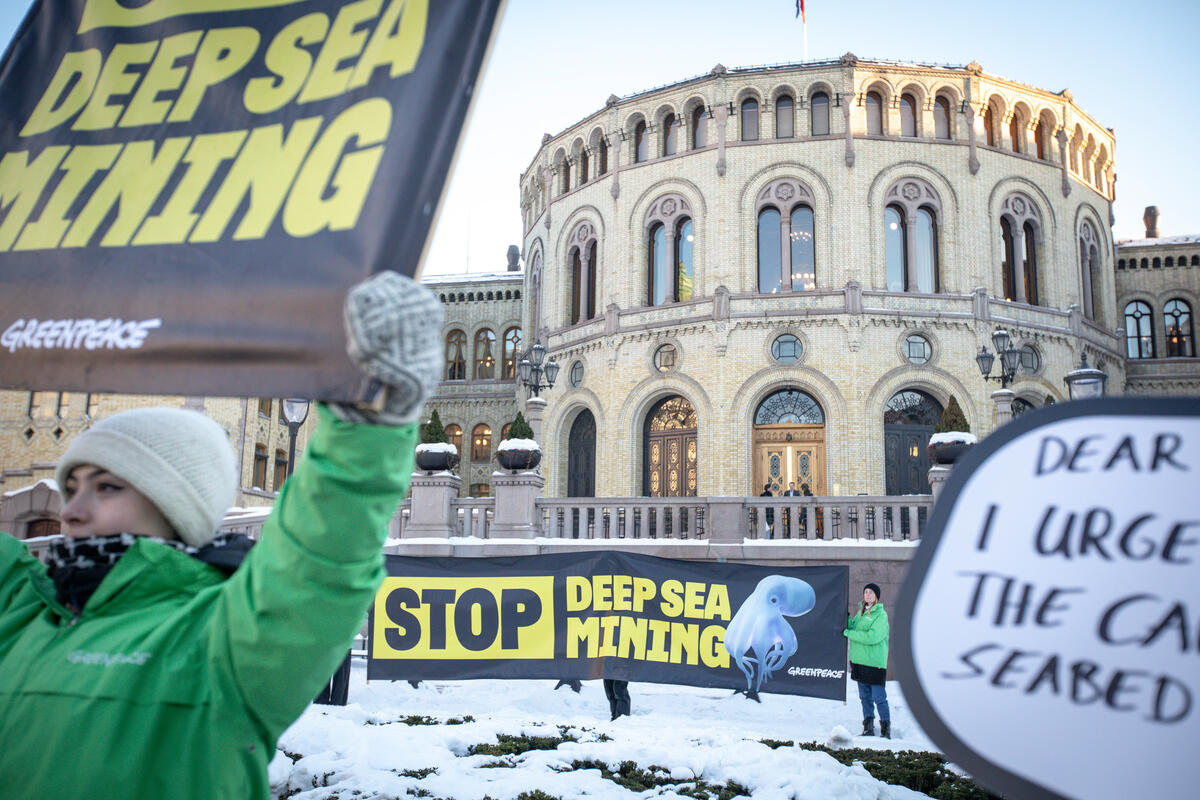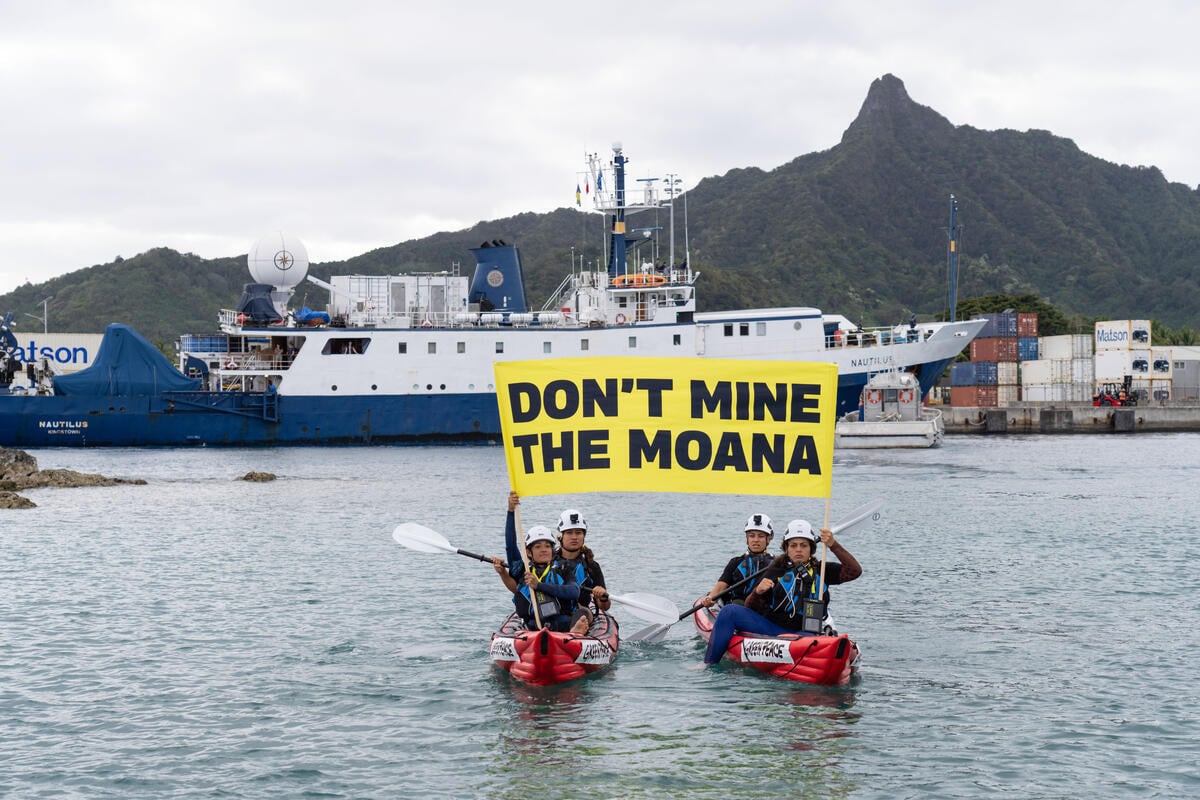The Arctic is a unique and vital marine environment, home to one of the world’s most fragile and diverse ecosystems, crucial for global climate regulation and supporting a wide array of species found nowhere else on Earth.
The recent decision taken by Norway to open up 281,200 km2 of its claim to an extended continental shelf to deep sea mining is putting ocean life and the livelihoods of those who depend on it at grave risk. This is what the Greenpeace International report Deep Sea Mining in the Arctic: Living Treasures at Risk is all about. It dives deep into one of the most diverse, vulnerable, rare, remote, and least understood ecosystems in the world; underlining the risks of allowing yet another extractive industry where climate change is already wreaking havoc. The report identifies Arctic Ocean ecosystems at the frontline of climate impacts and emphasises the critical need for political action to stop the deep sea mining industry before it starts.
Key insights
- Deep sea species are characterised by slow growth, high or extremely high longevity, late sexual maturity and low fertility. This makes them inherently vulnerable to disturbance and habitat damage. Therefore, habitats formed by animals such as deep sea sponges, stony corals, sea pens, sea fans, lace corals and black corals are classified as VMEs.
- Twelve species of marine mammals are regularly found in the area where Norway plans to start deep sea mining: minke whale, humpback whale, fin whale, blue whale, bowhead whale, northern bottlenose whale, sperm whale, orca, narwhal, white-beaked dolphin, harp seal and hooded seal.
- The strong ocean currents and unique underwater topography in the Nordic Seas create the conditions necessary for the spring phytoplankton bloom, which drives the region’s high biological productivity. This bloom supports a vast biomass of zooplankton, which sustains many species, including three key small pelagic fish: herring, mackerel and blue whiting. These pelagic fish species are predated on by larger marine animals and are also targeted by fishermen, who see Norway’s plans as a threat to fishing populations.
- The lack of certain baseline data regarding the biodiversity and associated conditions such as the prevailing bottom currents mean that it is impossible to comprehensively assess the scale of the environmental damage of any deep sea mining operations.
- The area is important to many globally significant populations of seabirds, especially as a migration route. Many of these populations are in decline, particularly the Arctic species.
- The Nordic Seas are a major transition zone where warmer, saltier Atlantic waters meet colder, fresher waters from the Arctic. They are undergoing rapid environmental change, getting warmer and more acidified.
Download the report:
Deep Sea Mining in the Arctic: Living Treasures at Risk

We need a global moratorium to stop the launch of this destructive new extractive industry. Join the Campaign.
Add your name


